Last updated on November 14th, 2025 at 06:05 pm
Beard care is a statement of style and self-expression in the world of men’s grooming. Discover beard grooming tips to enhance your look.
A well-maintained beard is more than just facial hair; it’s a pointer to personality and attitude to attention to detail.
In this comprehensive guide, we will detail the purpose and scope of beard care, providing you with valuable insights, practical tips, and expert advice.
From essential grooming techniques to product recommendations, get ready to elevate your beard game to the next level.
Table of Contents
- What is Beard Grooming or Beard Care?
- The History of Beard Care
- Benefits of Beard Care
- Types of Beards
- Beard Care Kits or Beard Grooming Kits
- Beard Grooming Tools
- Beard Grooming Products
- Beard Maintenance Tips
- Beard Shaping and Sculpting
- Beard Moisturizing and Conditioning
- DIY Home Remedies for Maintaining Healthy Facial Hair
- Common Beard Issues and Solutions
- Frequently Asked Questions
- Conclusion
What is Beard Grooming or Beard Care?
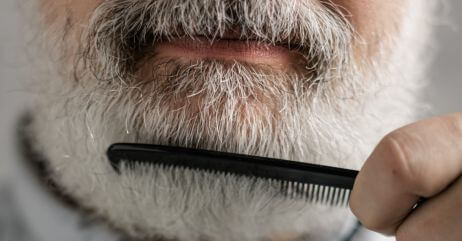
Beard grooming, also known as beard care, is the practice of maintaining and enhancing the health, appearance, and style of facial hair.
It involves a range of activities such as washing, conditioning, trimming, and shaping to ensure that the beard looks well-kempt and feels soft and manageable.
Beard grooming also includes the application of beard oils, balms, and other products to promote healthy growth and prevent issues like itching and dandruff.
Beyond aesthetics, beard grooming is a form of self-care and personal expression, allowing individuals to showcase their unique style and personality through their facial hair.
The History of Beard Care
The history of beard care can be traced back to ancient civilizations. In ancient Egypt, men would often wear beards as a symbol of status and power.
They would use various oils, beeswax, and combs to maintain and style their beards.
Similarly, ancient Mesopotamians and Persians would groom their facial hair using combs made of bone or precious metals.
During the Roman Empire, the popularity of beards fluctuated.
Emperor Hadrian, for example, was known for his long beard and encouraged its adoption throughout the empire.
However, his successor, Emperor Alexander, promoted a clean-shaven look.
This trend continued through the Middle Ages and into the Renaissance, where gentlemen often kept their beards shorter and well-groomed.
By the 19th century, the Industrial Revolution brought about changes in grooming practices.
With the rise of mass production and standardized products, specialized beard care items became more accessible.
Companies like Kent Brushes started producing beard brushes, and beard oils gained popularity to maintain softer and more manageable facial hair.
In the early 20th century, the clean-shaven look became fashionable due to military regulations during World War I.
However, the 1960s counterculture movement ushered in a resurgence of beard popularity.
This cultural shift promoted a more natural, rugged appearance and beard care products started catering to this trend.
In recent years, there has been a significant resurgence in the popularity of beards.
With the rise of the hipster subculture and the beard becoming a fashion statement, the demand for beard care products has skyrocketed.
Today, a wide range of specialized beard oils, balms, waxes, and combs are available to gentlemen seeking to maintain and style their beards to reflect their style.
Benefits of Beard Care
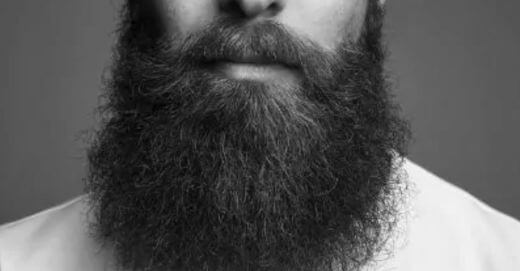
Beard care offers various benefits to individuals who choose to grow and maintain facial hair.
Some of these benefits include:
Beard Care Improves Self-confidence and Self-image
Taking care of one’s beard can significantly improve self-confidence and self-image.
A well-groomed beard can enhance an individual’s appearance, making them feel more attractive and put-together.
This boost in confidence can positively impact various aspects of life, including personal relationships and professional interactions.
Beard Grooming Enhances Facial Features and Hides Imperfections
A well-maintained beard can help enhance facial features and hide imperfections.
For individuals with a weak chin or a round face, a carefully shaped beard can create the illusion of a stronger jawline, making the face look more defined and balanced.
Additionally, a beard can help cover up scars, acne, or uneven skin tone, adding to an overall more polished look.
Beard Care Protects Against Environmental Factors
Facial hair, particularly a thick beard, can offer protection against environmental factors.
It acts as a natural barrier, blocking harmful UV rays from the sun and reducing exposure to dust, pollutants, and other airborne particles.
This protection can help prevent skin damage, dryness, and irritations caused by external elements.
Beard Grooming Enhances Attractiveness and Appeal
A well-groomed beard is often considered attractive and can increase an individual’s overall appeal.
Facial hair can add a sense of masculinity, maturity, and charm.
Studies have shown that women often perceive men with well-maintained beards as more attractive and socially dominant, which can have a positive impact on personal relationships and social interactions.
Related Posts
Facial Hair Oil Guide for Gentlemen
Must-have Grooming Tools for Men
The Roles of Grooming on the Confidence of Men
Everything to know about the Goatee Beard Styles
Haircuts And Hair Styles For Older Men
Discover Beard Styles for Older Men
Beard conditioning products for a fuller beard appearance
Types of Beards
There are many types of beards, but all stem from these three types we are going to discuss, full, short, and stubble beards.
Full Beard: A full beard refers to facial hair that grows on the cheeks, jawline, and chin, covering the entire lower part of the face. Popular styles of full beards include the classic full beard, the Bandholz, and the Garibaldi. See the best care for full beards.
Short Beard: A short beard is a facial hair that is maintained shorter in length. The length of a short beard can vary but typically does not exceed an inch in length. Popular styles of short beards include – The Goatee, the circle beard, and the balbo.
Stubble Beard: A stubble beard refers to facial hair that is intentionally kept short and has the appearance of a few days’ worth of growth. It is characterized by short, coarse hair that covers the face. Popular styles of stubble beards include the classic stubble, the designer stubble, and the light stubble.
Related: Essential Tips for Men’s Scalp Health
Beard Care Kits or Beard Grooming Kits
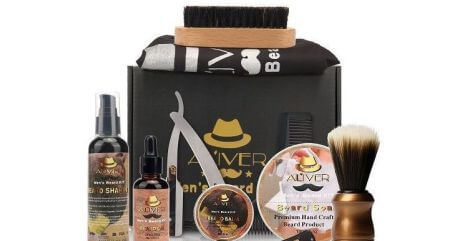
Beard care kits are sets or packages that contain various grooming products specifically designed to help maintain and style your beard.
These kits typically include a combination of beard grooming tools, products, and accessories all in one bundle, making it easier for individuals to take care of their facial hair.
Related: Myths about Men’s Grooming that Have Been told for too Long
Beard Grooming Tools
Beard grooming tools, such as beard trimmers and clippers, are vital components of beard care kits.
These tools are specifically designed to help with beard trimming and shaping, allowing individuals to maintain a well-groomed appearance.
Here are some of them and their functions:
Beard trimmers
These are electric devices specifically designed to trim facial hair at various lengths. They typically come with adjustable guards and blades that allow you to customize the length according to your preference.
Some beard trimmers may also have additional features like multiple speed settings or a precision trimmer for detailing.
Clippers
Beard clippers are similar to trimmers but are usually used for longer and thicker facial hair.
They are primarily used for initial beard shaping or for maintaining a longer beard length.
Clippers generally have larger, stronger blades that can handle thicker hair more effectively.
Related: Types of Beards for Men
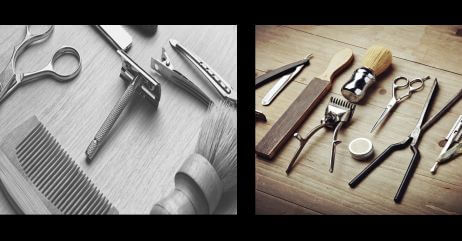
Proper Usage and Maintenance Tips
Usage tips
When using beard trimmers or clippers, it’s important to start with clean, tangle-free facial hair. Before trimming, ensure that your beard is dry to achieve more precise cuts.
Use the adjustable guards or length settings to trim to your desired length consistently. For shaping, it is advisable to start with a longer guard setting and gradually work down to avoid cutting too much off at once.
Use slow, steady movements and follow the natural contours of your face for an even trim.
Maintenance tips
To maintain the functionality and longevity of your beard grooming tools, it is essential to keep them clean and well-maintained.
Regularly clean the blades by removing hair clippings with a brush or by following the manufacturer’s instructions.
Lubricate the blades as recommended to ensure smooth operation. Some beard trimmers or clippers may also require periodic oiling.
Always store your tools in a dry, safe place to prevent damage.
Related: Iconic Goatee Style of Brad Pitt
Beard Grooming Products
Beard care products are in high demand as a result of the growing grooming lifestyle.
Here are some of the available grooming products:
Beard Shampoos and Conditioners
Beard hair is typically coarser and more prone to dryness than scalp hair.
Just like the hair on your head, it is important to keep your beard clean and moisturized.
Beard shampoos are specifically formulated to remove dirt, grime, and excess oil from your beard, while conditioners help to hydrate and soften the facial hair.
Proper cleansing and moisturizing prevent itchiness, dandruff, and dryness, promoting a healthy-looking and more manageable beard.
Recommendations for Beard Care Products
When choosing beard care products, it is advisable to opt for those made from natural ingredients.
Harsh chemicals and artificial fragrances can irritate the skin and may cause more harm than good.
Look for shampoos and conditioners that contain nourishing oils like jojoba oil or argan oil, as these can help moisturize and condition the beard.
Additionally, it’s best to choose products specifically formulated for facial hair rather than regular shampoo or conditioner, as they are designed to cater to the unique needs of beard hair.
Related: What is a Soul Patch?
Beard Oils and Balms
Beard oils and balms are important for providing hydration and nourishment to the beard and the underlying skin.
These products are usually made from a blend of carrier oils, such as jojoba oil, argan oil, or coconut oil, which provide moisture to the facial hair, making it softer and more manageable.
The oils also help to hydrate the skin beneath the beard, reducing itchiness and dryness.
Additionally, some beard oils and balms contain essential oils that provide a pleasant scent and have additional benefits like promoting hair growth or soothing irritation.
Related: Beard Styles Suitable for Black Men
Choosing the Right Product for Different Beard Types
Different beard types require different levels of hydration and hold.
For shorter beards, beard oil might be sufficient to provide hydration without weighing it down.
Beard balms, on the other hand, have a thicker consistency and are suitable for longer beards as they provide both hydration and some hold, helping to tame flyaways and shape the beard.
When selecting products, it is important to consider the thickness and length of your beard and choose accordingly.
Additionally, individuals with sensitive skin should opt for products that are labeled as hypoallergenic or suitable for sensitive skin to avoid any potential irritation.
Related: What is the Mustache Facial Hair?
Beard Maintenance Tips

Maintaining a well-cared beard needs proper care and attention. Here are some beard maintenance tips to keep your beard looking its best:
Combing and Brushing Techniques
Choosing the right tools for desired styles
When it comes to combing and brushing your beard, the tools you use play a crucial role. Use a high-quality, wide-toothed wooden comb or a boar bristle brush.
These tools are gentle on your beard, prevent static, and evenly distribute natural oils.
Creating neat and defined looks
Start by combing through your beard in the direction of hair growth. This helps in straightening out any tangles or knots.
For a neater appearance, brush your beard downwards and against the grain. Use a comb or brush to shape your beard and remove any loose hairs.
Washing and Cleaning Techniques
Frequency and best practices
Washing your beard regularly is essential for maintaining cleanliness and preventing any skin issues.
Depending on your lifestyle and the environment, wash your beard 2-4 times a week.
Use a beard-specific shampoo or a mild, sulfate-free shampoo to avoid stripping away natural oils.
Gently massage the shampoo into your beard, focusing on the skin beneath, and thoroughly rinse it out.
Avoiding common mistakes
While washing your beard, it’s important to avoid some common mistakes. Avoid using hot water as it can strip away the natural oils and cause dryness.
Similarly, avoid using harsh or regular soaps, as they can also lead to dryness and irritation.
After washing, pat your beard dry with a clean towel and avoid rubbing vigorously.
Beard Shaping and Sculpting
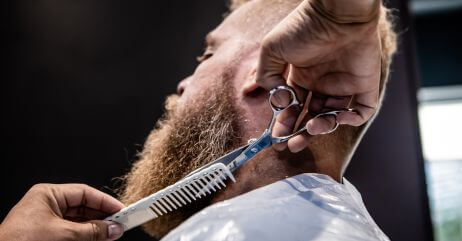
Beard shaping is the use of trimming and shaping instruments to keep the beards to the desired height and shape.
Let’s take a closer look…
Beard Shaping Tools
To maintain a well-groomed beard, you’ll need the following tools:
Beard trimmer: Choose a trimmer that allows you to adjust the length of the cutting guard. This will help you achieve the desired length for your beard.
Scissors: Small, sharp scissors are useful for trimming stray hairs and maintaining clean lines.
Beard comb: A beard comb helps in straightening and untangling your facial hair, aiding in an even trim.
Beard brush: A brush with firm bristles helps in styling and distributing beard products evenly.
Razor: Depending on the style you prefer, you may need a razor for defining clean lines or removing unwanted hair on your neck or cheek area.
Achieving Symmetrical and Professional Results
To achieve a symmetrical and professional-looking beard shape, follow these tips:
- Before shaping, wash and dry your beard to make it easier to manipulate.
- Comb your beard in the direction it naturally grows, ensuring all hairs are untangled.
- Use a trimmer on a longer setting to remove any excessive bulk. Start from the sides and work towards the chin, maintaining a consistent length.
- Focus on the neckline, deciding whether you want a defined line or a more natural, blended look. For a clean line, use a razor or trimmer against the grain.
- To assess symmetry, stand in front of a mirror and use reference points, such as the corners of your mouth or the center of your chin, to ensure both sides match.
- Regularly trim and maintain your beard to prevent any asymmetry and maintain a professional appearance.
Beard Moisturizing and Conditioning
Regular hydration is crucial for maintaining healthy facial hair. Just like the hair on your head, your beard requires moisture to prevent dryness, itching, and flakiness.
Hydration helps in improving the overall appearance and texture of your beard.
It also reduces split ends and breakage, promoting healthy growth. Using moisturizers and conditioners can keep your beard soft, manageable, and less prone to irritation.
DIY Home Remedies for Maintaining Healthy Facial Hair
There are several natural remedies you can try at home to maintain a healthy beard:
Beard oil: Apply a small amount of beard oil to your facial hair after showering or washing. This will help moisturize the skin beneath your beard and provide essential nutrients to the hair follicles. Common ingredients in beard oils include jojoba oil, argan oil, and grapeseed oil.
Homemade beard balm: Mix shea butter, beeswax, and essential oils to create your own beard balm. This can help moisturize your beard and keep it well-groomed throughout the day.
Aloe vera gel: Apply a small amount of aloe vera gel to your beard to moisturize the hair and soothe any itchiness or irritation.
Coconut oil: Massage a few drops of coconut oil into your beard to soften and condition it. Coconut oil is known for its moisturizing properties and ability to reduce frizz.
Balanced diet: Eating a balanced diet rich in vitamins and minerals promotes healthy hair growth. Ensure your diet includes foods like fish, eggs, nuts, and leafy greens, which provide essential nutrients for beard health.
Common Beard Issues and Solutions
Itching and Dryness
Itching and dryness in the beard can be a common problem for many men. The causes can vary, but some common factors include:
Causes and Remedies
Lack of moisture: When the skin underneath the beard lacks moisture, it can lead to itching and dryness. This can be remedied by regularly using beard oils or balms that contain natural moisturizing ingredients like jojoba oil, argan oil, or shea butter. Applying these products will help nourish the skin and keep it hydrated.
Improper washing: Over-washing or using harsh shampoos on the beard can strip away the natural oils, leading to dryness and itching. It is recommended to wash the beard with a gentle beard-specific shampoo or a mild cleanser. Avoid hot water and opt for lukewarm water instead to prevent further drying out the skin.
Ingrown hairs: Ingrown hairs occur when the hair follicles become trapped under the skin. This can cause irritation and itching. Gentle exfoliation of the beard area using a soft brush or a beard scrub can help prevent ingrown hairs and reduce itching.
Beard dandruff (seborrheic dermatitis): This is a common condition that causes flaky, dry skin underneath the beard. It can be treated with over-the-counter medicated shampoos containing ingredients like ketoconazole or selenium sulfide. Regularly washing the beard with these shampoos and keeping the skin moisturized can help alleviate itching and dryness.
Prevention Tips
- Use a good quality beard oil or balm regularly to moisturize both the beard and the skin beneath it.
- Avoid over-washing the beard, as it can strip away natural oils. Aim for washing the beard 2-3 times a week or as needed.
- Brush or comb the beard regularly to distribute natural oils and prevent tangles or knots that can lead to itching.
- Avoid scratching or picking at the beard, as it can further irritate the skin and worsen the itching.
To enhance the overall health of your skin, it’s essential to adhere to a nutritious diet and ensure adequate hydration by consuming ample water.
- If the itching and dryness persist or worsen despite following these tips, it is advisable to consult a dermatologist for further evaluation and treatment.
Patchy Growth or Uneven Beard
Patchy growth, or uneven beard, refers to the condition where facial hair does not grow uniformly across the face, resulting in bare patches or areas with less density.
This is a common occurrence in many men and can be influenced by various factors such as genetics, hormonal imbalances, or lifestyle choices.
Patchy growth can give a scruffy appearance to the beard and is often a source of frustration for those wishing to have a full, even beard.
Reasons and Potential Solutions
Genetics: Some people may have naturally patchy beards due to genetics, which cannot be corrected. However, there are some solutions to make it look more even:
- Growing it longer: Longer beard hairs can cover up patchy spots and create the illusion of a fuller beard.
- Trimming properly: Carefully trimming to maintain an even length can help minimize the appearance of patchiness.
- Using a beard filler: Beard fillers are products that help fill in sparse areas temporarily. These products contain fibers or pigments that adhere to the beard hair, making it look fuller.
- Hormonal imbalance: Hormonal imbalances, such as low testosterone levels, can affect beard growth. In such cases, it is recommended to consult a healthcare professional for appropriate treatments.
Patience and Tricks for Maximizing Growth
Be patient: Beard growth takes time, and different individuals have different growth rates. It is important to give your facial hair enough time to grow and fill in the patches naturally.
Keep your beard clean: Regularly wash your beard with a mild cleanser to remove any dirt, dead skin cells, and excess sebum that might hinder growth.
Proper grooming: Brushing or combing your beard regularly in the direction of growth can help stimulate the hair follicles and improve overall beard growth.
Good nutrition: A healthy diet rich in essential vitamins and minerals, such as biotin, vitamin E, and zinc, can support healthy beard growth. Consider incorporating foods like eggs, nuts, fish, and leafy greens into your diet.
Beard Dandruff and Flakiness
Beard dandruff, also known as “beardruff,” refers to the flaky skin that can occur underneath a man’s beard.
It occurs when the skin underneath the beard becomes dry and irritated, leading to the shedding of dead skin cells.
Factors such as inadequate hydration, improper beard care, and skin conditions like seborrheic dermatitis can contribute to beard dandruff.
Regular washing and moisturizing the beard, using a good beard oil, and exfoliating the skin can help alleviate the flakiness.
Identifying Causes and Treatments
Dry skin: Dry skin is a familiar cause of beard dandruff. It can be caused by cold weather, low humidity, excessive washing, or using harsh beard products. Regularly moisturizing the skin beneath your beard can help alleviate dryness and reduce dandruff.
Seborrheic dermatitis: This is a common skin condition that can affect the scalp and also the areas with hair, including the beard. It has the characteristic red, itchy, and flaky skin. Over-the-counter anti-dandruff shampoos containing ingredients like ketoconazole or zinc pyrithione can help control seborrheic dermatitis.
Fungal infection: Fungal infections, such as ringworm, can also cause dandruff in the beard. A doctor may prescribe antifungal medications to treat the infection.
Maintaining a Clean and Healthy Beard
To maintain a clean and healthy beard, regularly wash and condition it with beard-specific products.
Trim and shape it as needed to prevent split ends and maintain a neat appearance. Brush or comb daily to detangle and distribute natural oils.
Here are more ways to maintain a clean and healthy beards:
Regular cleansing: Wash your beard regularly with a gentle beard shampoo or cleanser, being careful not to strip away too much natural oil. Avoid using regular hair shampoos as they can be harsh on the facial skin.
Exfoliation: Use a beard brush or exfoliating scrub to remove dead skin cells and prevent them from building up in your beard.
Moisturizing: Apply a beard oil or moisturizer to keep your beard and the skin beneath well-hydrated. This helps prevent dryness and dandruff.
Avoid scratching or picking: Resist the urge to scratch your beard, as it can exacerbate dandruff and irritate the skin.
Frequently Asked Questions
What is beard care?
Beard care refers to the practices and products used to maintain the health, cleanliness, and appearance of a man’s facial hair.
What is beard grooming?
Beard grooming involves the activities and techniques used to shape, style, and maintain a well-groomed beard, including trimming, washing, and moisturizing.
How do you groom and care for a beard?
To groom and care for a beard, regularly wash it with a beard shampoo, trim it to maintain the desired length, moisturize with beard oil or balm, and comb or brush it to keep it neat.
What is the history of beard care?
The history of beard care dates back centuries, with different cultures and time periods having their own grooming practices and styles, reflecting social, religious, and fashion trends.
Conclusion
Beard care and grooming are essential practices for maintaining a healthy and well-groomed beard.
By following a regular routine of washing, conditioning, and moisturizing, one can prevent common beard-related issues such as dryness, itching, and beardruff.
Trimming and shaping the beard can enhance its appearance and promote its growth.
In addition, proper nutrition and exercise play a significant role in beard health.
By incorporating these practices into your daily routine, you can achieve a lustrous, stylish, and well-maintained beard that accentuates your personality and boosts self-confidence.
Embrace the art of beard care and grooming to unleash the true potential of your facial hair.
References:
Pyo Merez is a men’s lifestyle enthusiast and writer about the gentleman’s place and impact on society. Raised by a distinguished gentleman dad, he offers unique insights into how the mind of a gentleman works and how societal norms shape gentlemen’s identity and vice versa.
Through his insightful articles, Pyo taps into the depths of gentleman culture to provide perspectives on etiquette and manners in modern society.
